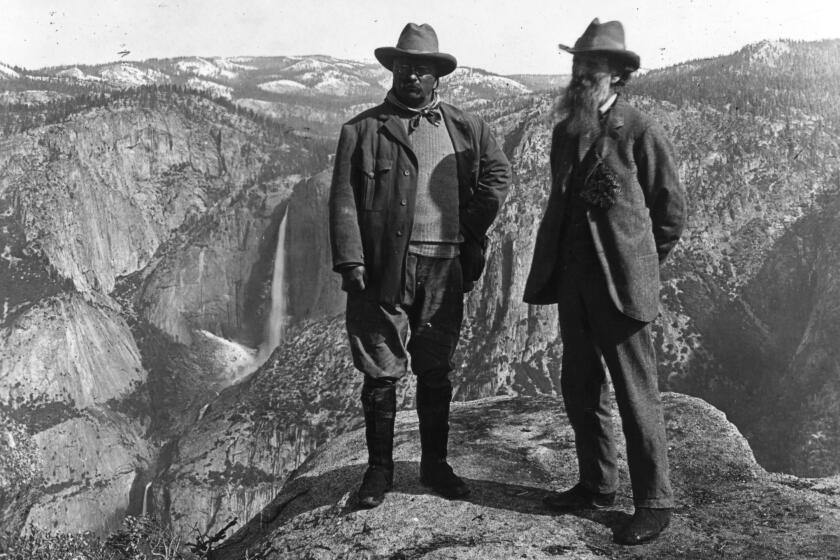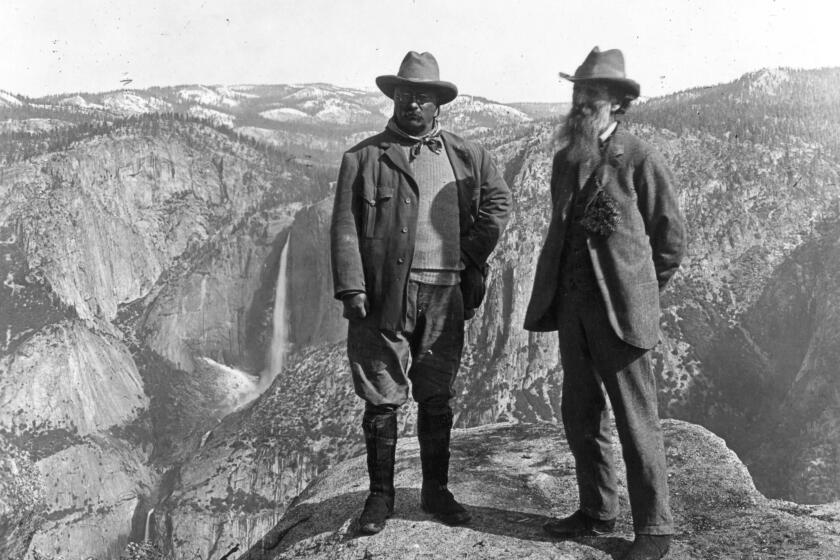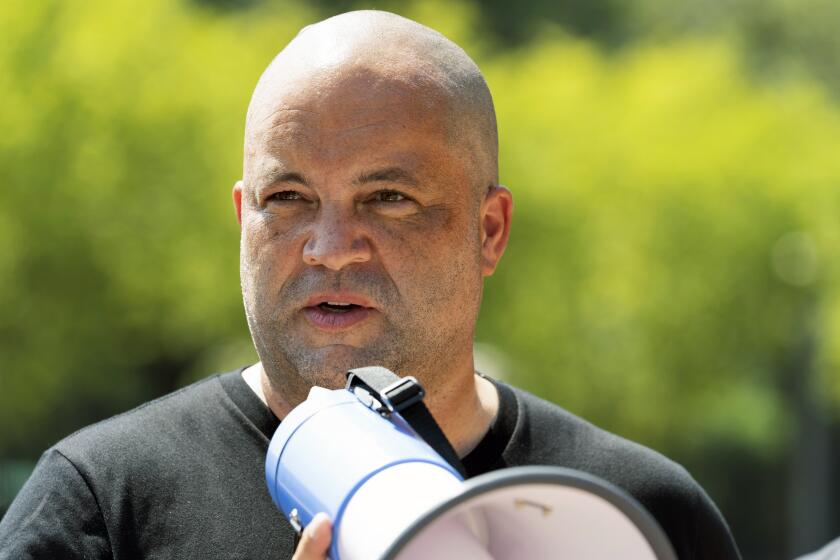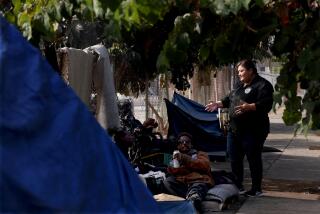
Some want the environmental organization to lean harder into environmental justice, while others fear the club is abandoning its roots in wilderness preservation. The state club’s new acting director, tasked with managing the fractured membership, believes in a big tent approach.
- As acting director of Sierra Club California, Bobbi Jo Chavarria oversees a membership divided over the environmental organization’s mission and priorities.
- California membership in the Sierra Club has dropped by roughly 32,000 members, or 19%, since 2019.
When Bobbi Jo Chavarria was invited to join her local Sierra Club chapter’s political committee, she saw it as an effort by its members to include “someone like me.”
A woman. A person of color. And someone who could address sensitive issues of race and diversity in ways that might be difficult for the white older members in the San Gorgonio chapter to do without drawing fire.
Eight years after that invitation, Chavarria is now the acting director of Sierra Club California. And she — and whoever takes the reins for the long haul — must manage long-running disputes over the club’s mission and forge consensus on issues of diversity, equity and inclusion.
Sierra Club California is one of the most influential environmental voices in Sacramento, advocating for policies on behalf of the 13 local chapters. California — the birthplace of the club — is also a powerful force in the national organization, home to its headquarters and more than 134,000 members.
But the club has also been riven by bitter arguments over its core mission. Some members believe the organization needs to step up its advocacy for low-income minority neighborhoods that bear the brunt of pollution from oil refineries, industrial complexes and freeways. Others think the club has strayed too far from its roots as a champion of wilderness preservation.
John Muir, a towering figure among environmentalists, made harmful and disparaging remarks about Native Americans and Black people.
“Instead of advocating for wildlands, they’re advocating for access for underprivileged communities, expanding urban parks, focusing on human desires and needs,” said Richard Halsey, 69, of San Diego, who left the Sierra Club in 2022 after more than five decades of involvement.
“Instead of fighting for nature, you’re doing social justice issues, which are fine, but that’s not what the club’s about,” he said. “Not that they can’t be involved with that, but it’s become the mission.”
Gladwyn d’Souza, a 69-year-old Belmont resident, also left the club, but for essentially the opposite reason. He said Sierra Club leaders weren’t adequately pursuing the environmental justice objectives the organization set for itself in its 2030 Strategic Framework, which identifies “goals to address systemic challenges that are accelerating the climate and extinction crises and deepening oppression.”
“It’s a nice document, and it has all those things in it, but at the chapter level, nobody was paying attention to that,” d’Souza said. “They were still focused on the old Sierra Club.
“It’s hard to change culture in an organization that’s member-based and member-financed, since the people giving them the money are the ones that represent the old-guard view,” he added.
Chavarria, 53, says the Sierra Club is big enough to represent both constituencies.
“It is a tension,” she conceded, “because the folks who spent 60 years in the desert, they are rightly so concerned about the desert and the ecosystem and the animals there. The walkability and public transportation [of populated areas] is not their issue, but it still is an environmental issue. And if Sierra Club isn’t at the table having those conversations, who else would be?”
Chavarria’s own experience in joining her San Gorgonio chapter’s political committee in 2016 reflects what some members say is a long-needed shift by the group to become more inclusive and address issues of environmental justice, which could be vital for the organization’s future.
At the time, Chavarria was supporting Latino challenger Eloise Gómez Reyes against Black incumbent Cheryl Brown in a race for an Inland Empire state Assembly seat. Brown, who had come under fire from environmentalists for what they saw as cozy ties with the oil industry and other business groups, ended up losing the election to Reyes (who is now running for state Senate in the Nov. 5 election).
Some sought to frame the contest as driven by racial loyalties, Chavarria said, prompting her to write a Facebook post stating that her support was based solely on the challenger’s views on the environment, human rights and other matters she aligned with.
The post caught the attention of the late Jono Hildner, she said, who invited her to join the Sierra Club’s San Gorgonio chapter committee that he led at the time.
“I was talking about the race issue and saying, ‘This is not what it’s about. It is about the issues.’ I could say that as a Democratic activist, as a woman of color, as a mom in the community,” Chavarria said. Hildner, she said, could not.
For Chavarria, the role on the politics committee set the stage for advancement through the chapter’s volunteer leadership ranks, while she worked professionally in accounts payable administrative roles. Early this year she was hired as a field organizer for the Sierra Club’s Clean Transportation for All campaign, and then in July she was tapped to be the state organization’s acting director.
The Sierra Club acknowledges the racist history of its co-founder, the famed environmentalist John Muir.
Sierra Club California’s personnel committee will eventually determine who will become the full-time director. No timeline has been set, but the aim is to make a decision within the next few months, said Karen Maki, executive committee chair for Sierra Club California.
Chavarria is the third person to lead Sierra Club California since longtime director Kathryn Phillips stepped down in 2021. Brandon Dawson had the job for two years before leaving to work for a nonprofit focused on environmental justice. He was followed by acting director Jason John, who went on parental leave in July and never returned.
Phillips is hopeful for Chavarria’s tenure.
“She’s got good sense about how to manage people and what needs to be done and that sort of thing,” Phillips said. “The attention that gets put on the director is: How do you do the legislative piece? But really the most important piece is: How do you motivate and help grow young staffers?”
California plays an outsize role in the Sierra Club, which was founded 132 years ago by naturalist John Muir and is headquartered in Oakland. To a degree, some of the debates roiling the California branch mirror those for the national organization.

In the wake of George Floyd’s murder in 2020, former executive director Michael Brune called for the club to reexamine Muir and his legacy, citing derogatory comments the founder had made toward Black and Indigenous people and his association with notorious eugenicists.
Brune’s comments set off a heated debate within the club, and he resigned about a year later. The national club is now led by executive director Ben Jealous, former chief executive of the NAACP, but contention over issues of diversity have persisted. The strife was intensified by layoffs last year that included the club’s entire equity team and many staffers of color.
Christopher Schuler, press secretary for the national organization, said their previous processes for equity were plagued by delays and uncertain outcomes that harmed marginalized communities. Restructuring, he said, has positioned the club to address past shortcomings.
“For several years now, the Sierra Club has intentionally focused on integrating environmental justice into every department as you cannot separate it from any effort to protect clean air, water and our collective future,” he said.
“There is no green vote without the Black or brown vote,” he says.
An issue dividing some California members has been housing, and whether the Sierra Club — long seen by many as anti-development — needs to push for denser housing in urban areas, in part because it can shorten commutes and reduce pollution.
“Is it true that we are behind the times in terms of housing?” asked Nick Pilch, 63, who serves on the executive committee of the club’s San Francisco Bay chapter. “I’d say that it’s not a good reputation for Sierra Club California to have, and I think [Chavarria] ought to address that.”
If shifting the club’s priorities alienates some older members who happen to be among the club’s important donors, it would be justified, Pilch said.
“If we are evolving in a good way, in a positive way, as an organization, and we lose older members or longer-time members, some of whom might have money, but we’re becoming more healthy, [a] better organization that’s attracting young people of color, we shouldn’t worry about those older donors that might be leaving,” Pilch said. “Because if we don’t evolve, if we don’t get those young people of color, you know, it’s an existential question. We won’t survive anyway.”
In fact, the California membership has declined by roughly 32,000 members since 2019. State club leaders say people may have disengaged because they were less concerned over environmental threats under President Biden. But some, like Halsey, attribute the decline to a shift away from its traditional priorities.
Mary Ann Ruiz, secretary for the Sierra Club California executive committee, says environmental justice, often defined as fighting for and working alongside communities of color so they don’t suffer the brunt of pollution and other ills, “should be at the core of the work that we do, and we should be considering that in everything that we do.”
But some believe the club’s money and expertise is being misdirected.
“[I]f the Sierra Club can’t spend its precious resources fighting for our ideals of a safe climate and a living wilderness in these perilous times, led by the most qualified and best able, then I can find another organization to support,” a member named Michael Katz wrote in response to Brune’s post scrutinizing Muir.
Chavarria, who sported a red shirt emblazoned with an image of progressive icon Sen. Bernie Sanders (I-Vt.) being arrested at a civil rights protest during a recent interview, said housing issues are incorporated into the club’s clean transportation campaign. But she said resources and volunteer expertise can constrain some efforts.
“When they say the Sierra Club should be doing this, the Sierra Club is those folks, and so then it’s going to be their leadership that directs us and themselves to do the work,” Chavarria said.
Personal experience colors Chavarria’s worldview. With deep roots in Fontana, Chavarria is passionate about reducing air pollution from trucks and reining in the massive warehouse developments that have come to dominate the Inland Empire. One of her top goals as director is to accelerate the transition to zero-emission transportation to curb greenhouse gasses.
Yet she said she couldn’t afford to make the switch to an electric car until recently.
“It was not economically feasible for my family to live what my values were,” she said.
As toxic emissions from diesel traffic choke the air, activists are calling for a moratorium on new warehouses and for the governor to declare a state of emergency.
She has a background in sales and doesn’t hold advanced degrees, which she said differentiates her from many members who are highly educated and affluent, factors that make it easier for them to experience wilderness than people who are struggling to make ends meet.
The club’s many volunteers have been touted as both a strength of the organization, and as a weakness. Known for their passion, volunteers give generously of their time and can be mobilized to show up in droves at rallies, call legislators and write letters to the editor.
But, according to a 2021 report by consulting firm Ramona Strategies, volunteers also exert managerial authority that it advised should be reserved for professional staff.
The report portrayed the unpaid base as an almost lawless entity, describing hostile power struggles with staff and near-total impunity.
At the state level, Chavarria said one of her goals was to improve relations between staff and volunteers. Historically, each group did their own thing, “and never the twain should meet until, like, you had to,” she said.
It’s a goal shared by Maki, chair of the Sierra Club California executive committee. Maki said Chavarria’s background in volunteer leadership and organizing gives her a leg up in this department.
“I think she’s going to help volunteers and staff work better together to be effective,” Maki said. “And that I am very excited about.”











